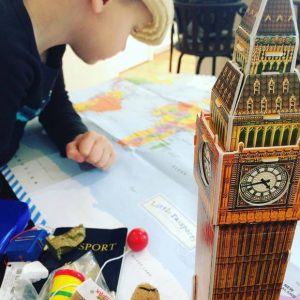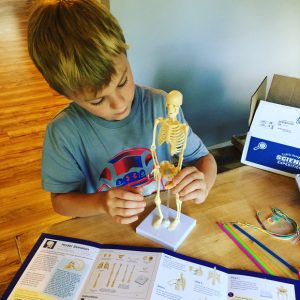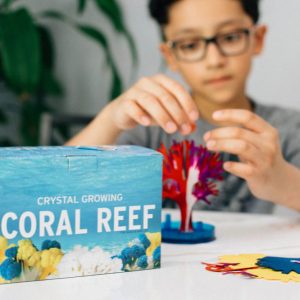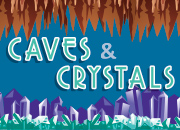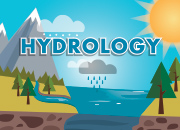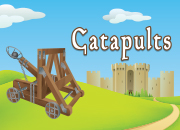Welcome to Science Expeditions Extras!
Dive deeper into your science kit’s theme and experiments. This month, learn a little extra about caves and crystals.

Caves & Crystals

While scientists have searched most of the Earth’s surface, vast worlds lie beneath its oceans and crust that remain untouched by humans. Scientists believe there could be thousands of caves that have yet to be uncovered. Why haven’t we explored more of them? Because we don’t know where they are! The majority of caves (about 90%) lack a visible entrance. Caves are also very difficult and dangerous to navigate.
Flip through the photo gallery to see photos of Carlsbad Caverns (where Sam and Sofia visited!) and other caves. Then, practice tying knots like a caver. Need help with your experiments? Watch our tutorial video on how to grow your own crystal and learn a few of Aunt Charlie’s tips! Check out more extras below and keep exploring and experimenting.
Gather the household items from the list below before you begin your experiments. Check off items as you go or print the list here. All other materials are included in your kit.
Grow Your Own Crystal
hot filtered water
scissors
magnifying glass (included in your Forensic Science Kit)
Stalactite on a String
baking soda (a fresh box works best)
2 clear cups
tablespoon
hot tap water
old plate (avoid using a paper plate)
food coloring (optional)
Sand Stalagmites
water
old plate (avoid using a paper plate)
bowl or small bucket
spoon (optional)
ruler (optional)
small rock (optional)
Fun Facts
In the U.S. and Canada, caving is also known as spelunking. In Ireland and the U.K, it’s commonly known as potholing.
There are caves in every state of the United States, except Louisiana and Rhode Island.
Many walls are full of crystals! Drywall is used to make the interiors and ceilings of homes and buildings. It’s made up primarily of gypsum crystals.

Aunt Charlie’s Corner
Expert tips to complete this month’s science experiments!
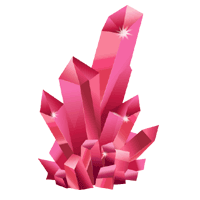 Grow Your Own Crystal
Grow Your Own Crystal
Watch this experiment!
- Your crystals need the right environment to grow. The temperature in the air and water and the type of water used all can affect how your crystals will grow.
- Filtered water works best for crystals.
- Ask an adult to heat the water until it boils. Heat it in the microwave or on the stovetop to get it hot enough. It’s very important to dissolve the powder as much as possible.
- If there is still a lot of powder, try adding a little more hot water to help it dissolve.
- Seeding is important. By saving some of your crystal powder to sprinkle on top, you’ll give your crystals extra grip to grow on your gravel.
 Stalactite on a String
Stalactite on a String
- In the first step, you’re making what’s called a saturated solution. A saturated solution is when a solute (in this case, the baking soda) is dissolved into a solvent (the hot water) until it can no longer dissolve, leaving undissolved solute (the baking soda) at the bottom of the solution.
- The liquid solution will travel down the length of the string and will drip. Avoid using a paper plate in case the liquid seeps through.
- Use a small plate so the solution has less length to travel. The space between the cups should be about 6-8 inches.
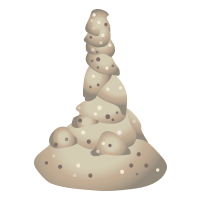 Sand Stalagmites
Sand Stalagmites
- Always remember you can add more water to the sand if it gets too dry, and if it gets too wet, leave it in the sun for several minutes. Alternatively, let the sand settle in the bowl and pour out the water at the top.
- Use an old, waterproof plate. The wet sand may scratch the surface of your plate and water may seep through a paper plate.
Print and Play
Cavers often use ropes to climb out of deep holes or rappel off of cave walls. In this activity, you’ll learn how to tie knots that cavers would use to keep them safe.

Photos
View more caves and crystals from around the world.
Flip through the gallery.
Explore More
Click a button below to learn about another science theme.
We Our Community
